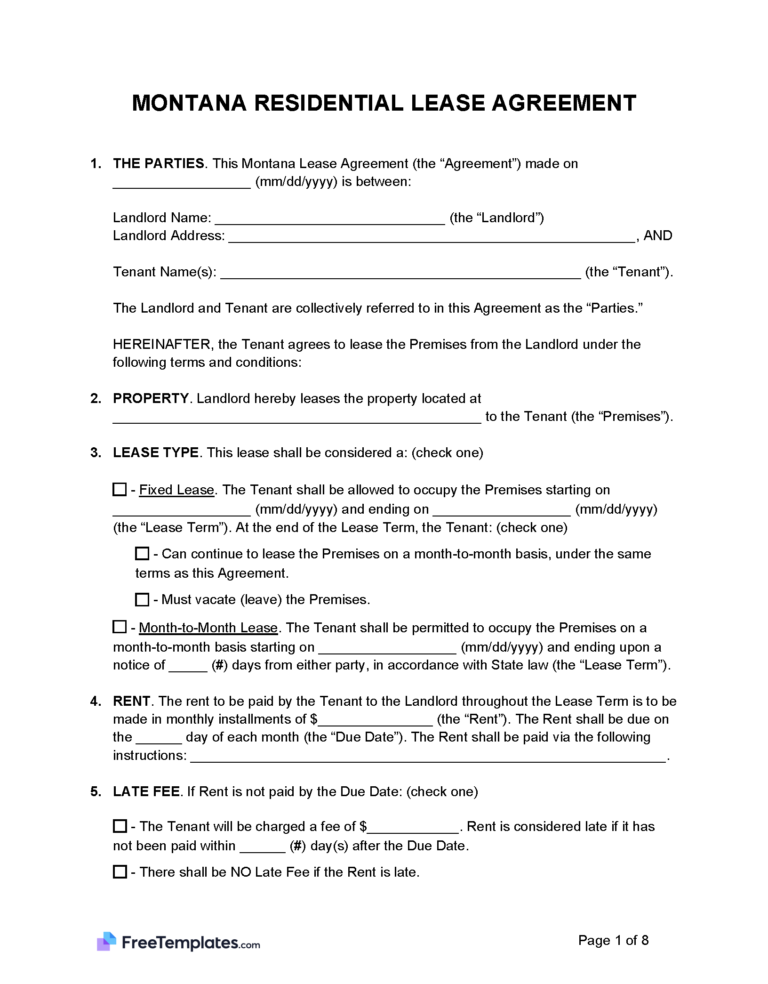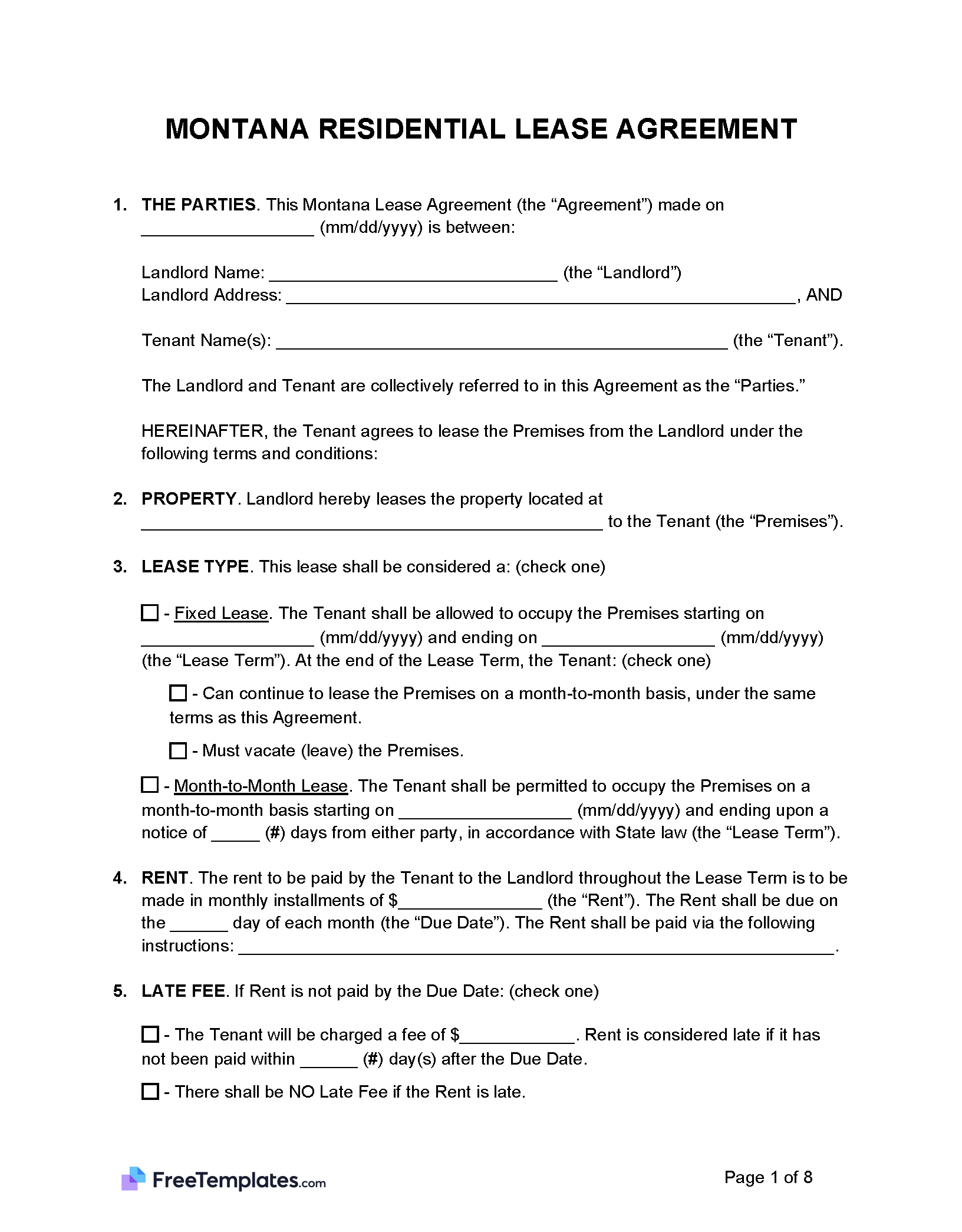By Type (6)
| Standard Lease Agreement – An agreement between a landlord and tenant for the use of residential property, usually for 12 months. |
| Commercial Lease Agreement – This contract is used by a business looking to rent a space for a certain period of time for retail, office, or industrial use. |
| Month-to-Month Lease Agreement – A contract used for a recurring tenant who wishes only to rent a space for 30 days and may renew after which. |
| Rent-to-Own Agreement – A standard lease with an added stipulation of being able to purchase the space they are renting. |
| Roommate Agreement – Used by two or more renters cohabiting in the same space to lay the groundwork for their shared responsibilities. |
| Sublease Agreement – This is used when the tenant wants someone else to take over their leased space, usually with the landlord’s permission. |
Disclosures (5)
Lead-Based Paint Disclosure – A tenant renting any property built before 1978 must receive a lead paint disclosure from the landlord stating the possibility of toxic lead paint on the premises. (EPA/HUD Fact Sheet)
Landlord’s Contact Details – The tenants must be provided with the names and addresses of any landlord or property manager listed on the lease. (§ 70-24-301)
Methamphetamine Disclosure – If the rental property has ever been used as a clandestine methamphetamine lab or has been contaminated by methamphetamine smoke and not property remediated, then the tenants must be notified with this disclosure. (§ 75-10-1305)
Mold Disclosure – If the landlord is aware of past or present mold on the premises, a written disclosure about the possible harms of mold must be given to the tenant. (§ 70-16-703)
Statement of Condition – A written statement of the condition of the rental property must be given to all parties listed on the agreement if the landlord requires a security deposit. (§ 70-25-206)
Security Deposit
Maximum Amount – In Montana, there is no maximum the landlord may charge a tenant for a security deposit.
Returning to Tenant – The security deposit must be returned to the tenant within 10 days of the lease end unless deductions were made to the deposit, in which case the landlord must return the funds within 30 days. (§ 70-25-202(a), (b))
Interest – The landlord is not required to collect interest on the security deposit for a rental unit.
Itemized List Required – If the tenant does not receive their full security deposit back, they must receive a complete list showing all deductions made within 30 days of the lease’s end. (§ 70-25-202(a))
Separate Bank Account – The landlord is not required to keep the security deposit funds in a separate bank account.
- Exception for Property Managers – Licensed property managers must keep the security deposit in a separate trust account. (ARM § 24.210.805(1))
Landlord Access
General Access – A 24-hour notice must be given to any tenant if the landlord wishes to enter the property. (§ 70-24-312(3))
Emergency Access – In an emergency, the landlord can enter the property without notice or the tenant’s consent. (§ 70-24-312(2))
Paying Rent
Grace Period – In Montana, there is no grace period for late rent unless otherwise agreed to with the landlord in the lease agreement. (§ 70-24-201(2)(c))
Maximum Late Fee – There is no maximum late fee that a tenant may be charged if they are delinquent with their rent.
Returned Checks (NSF) – If a tenant writes a bad rent check, they may be subject to a maximum fee of $30. (§ 27-1-717(2))
Withholding Rent – A tenant may withhold up to one month’s rent if their rented unit is unsuitable to live in and the landlord has not fixed it after they’ve been notified. (§ 70-24-406(1)(b))
Reasons for Eviction (3)
Non-Payment of Rent – If tenants fail to pay their rent on time, they may be given a 3-day notice to quit or pay. (§ 70-24-422(2))
Non-Compliance – Tenants who violate the lease agreement by not complying may be served a 14-day notice to quit or comply. (§ 70-24-422(1)(d))
Tenant Maintenence – The tenant is responsible for maintaining a clean and orderly rental unit. If they fail to do so, they may be given a 14-day notice to fix the issue, or the landlord may remedy the problem and bill the tenant. (§§ 70-24-321)
Lockouts – In Montana, a landlord cannot lock a tenant out of their rental unless the court grants permission. (§§ 70-24-411)
Leaving Before the End Date – If a tenant abandons the property, they are still liable to pay the rent until the original lease agreement expires.
- Duty to Find Another Tenant – The landlord must find another tenant to fill the abandoned property. If they do, the prior tenant will no longer be responsible for paying rent. (§ 70-24-426(3))

